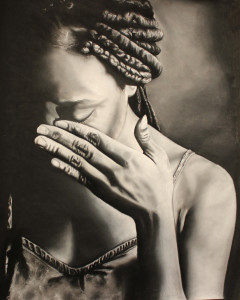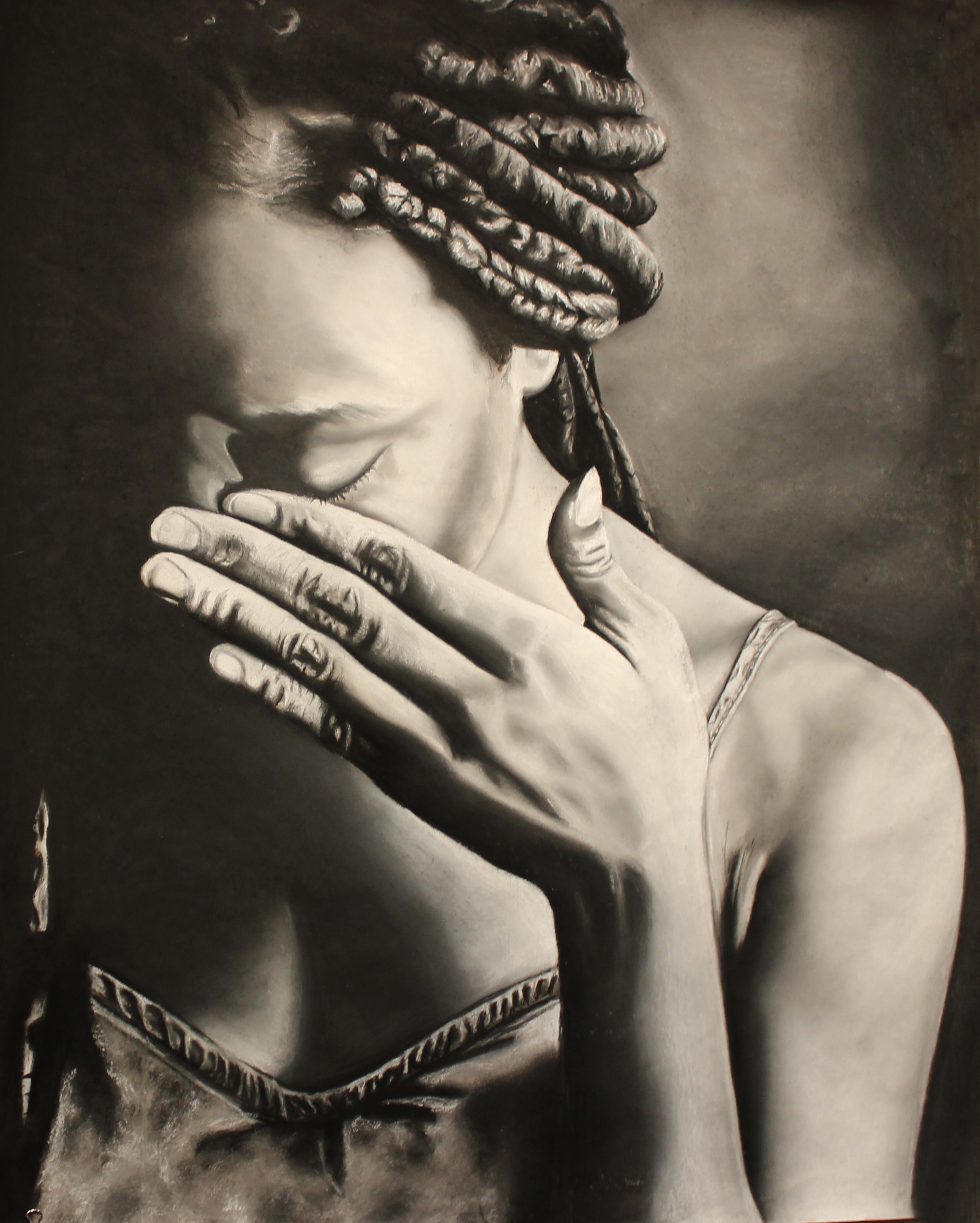MC international student presents touching art exhibition

On Nov. 13, Sandile Nzuza, an MC international student, showcased his art collection entitled “Revisiting my Childhood,” in the Clayton Center La Dolce Gallery.
Nzuza is a full time artist and a graphic design student at the University of Johannesburg in South Africa. Nzuza’s collection was a tribute to the victims of the 1976 Soweto Student Uprising on June 16, 1976.
The exhibition also sheds light on the children who grew up in post-apartheid South Africa. Apartheid was an intense system of segregation that was in place in South Africa in the 20th century. Nzuza uses untraditional materials, such as cardboard, in order to represent how, as a child, he and many other South African children had to be creative and make their own toys out of things they found around them.
Nzuza organized his pieces in a clockwise order around the gallery in order to first show South Africa’s dark past and then, finally, its bright future. The first painting in the collection, titled “Drum,” portrayed the massacre on June 16, 1976. This painting had a bold color palette of red, black and white and thick brush strokes to portray the trauma of that day.
Nzuza wanted to show the real side of this event because he explained that many media outlets, including the magazine Drum which inspired the paintings title, often only portrayed the glamour of South Africa and ignored the more dark and depressing events that were occurring. This painting showed the silhouette of a young boy looking at the crowd. Nzuza wondered how the children of South Africa must have reacted to the horrible events taking place around them.
Next to the first painting was a wall featuring a small amount of names of the victims of the tragedy and the way they lost their lives. Nzuza included this wall of names because he was inspired to do this art collection as his way of “wishing these people a peaceful eternity.”
Continuing through the exhibition, Nzuza’s work began to show the brighter and happier side of South Africa. Most of the children and teens in the paintings were smiling. These paintings were very vivid in detail and looked very realistic. You could see so much emotion on the faces of the children in the paintings.
Photographs of young South African adults, who are a part of the “Born Free” generation, were also featured in the collection. The people were photographed on black backgrounds to portray how although they are happy and they have less worries than generations before them, they are “emerging from a dark past,” Nzuza said.
Nzuza completed this collection of art in the time he has been at MC, and it is truly amazing. Those who attended the exhibition did not only have the privilege of viewing the touching collection, but also had the opportunity to learn about the history and emotion behind them.


